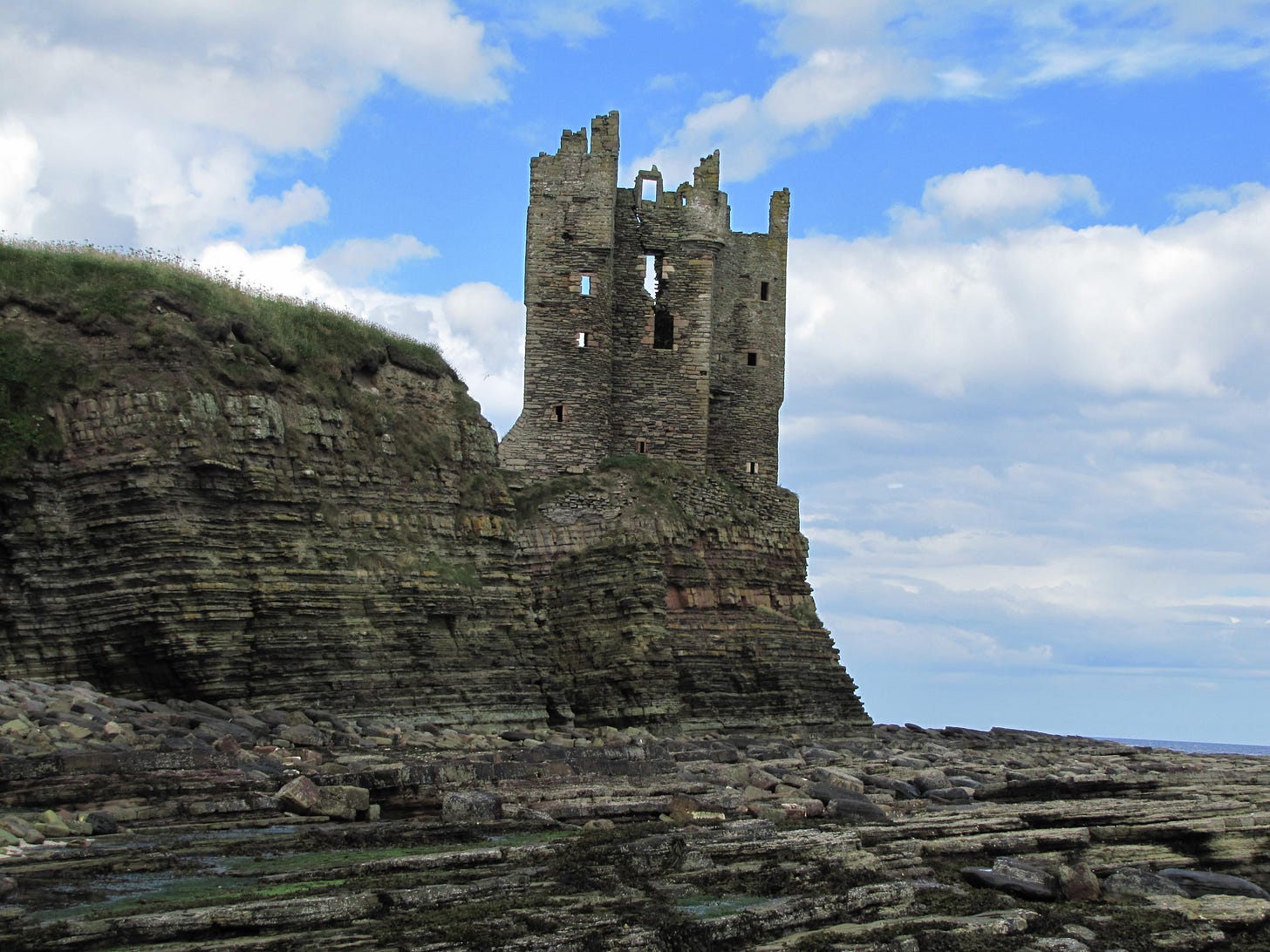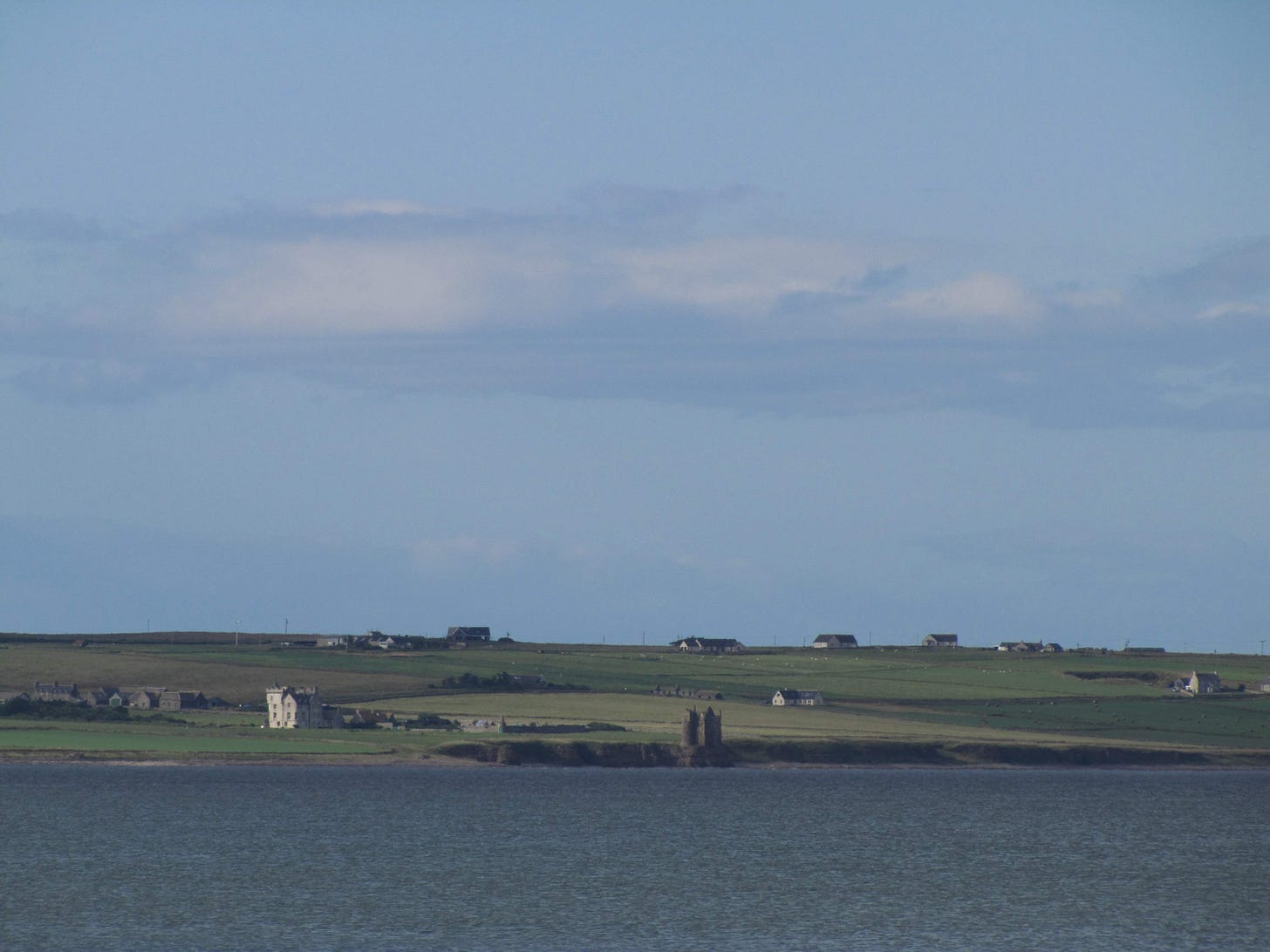The edge of the land, where it meets the edge of the sea, is a front line, the beginning of both worlds and an end of each. It is easy to see this as a metaphor—an old, old metaphor—the waves chewing and spitting out rock and sand, the land stretching out mats of résistant marram grass, marching tangles of mangrove and flat formation after flat formation of saltmarsh, rivers firing silt, fallen trees wedging, blockading and forming islands, a tapestry of constantly altering, soft boundaries—boundaries which mean something on a human map but are simply as it is to the animals, plants and all other life which call this narrow ecological corridor home.
Many walks along the coast of the UK will reveal the fortifications of this front line. You can find where the rock is harder, dykes projecting outward, softer sedimentary stone weathering away to leave behind igneous or metamorphic cousin. You can also find the plantlife which stabilises, those thick dune-weavers I mentioned, tough grass beloved by generations of chair manufacturers, or the seagrass prairies below the water, knitting together and pulling in more carbon than, until recently, we thought possible, even as we poison, dredge and trawl them into oblivion.
Then there are fortifications of a more literal kind, remnants of a warring past, from the good old days, when the enemy was simply other humankind (natural disasters considered Acts of God as, indeed, certain insurance companies still do consider). Here, crumbling concrete tank traps, dragon’s teeth, pillboxes, heavy gun platforms and mazes of tunnel, searchlight emplacement, or concrete infill from where bridges and key infrastructure had been rigged for emergency demolition in event of Nazi invasion.
Move along in time and you can find Martello towers, built to guard against Napoleonic threat, many of which were repurposed during the world wars—why waste a good fortification, after all. There is one in Orkney, round and hulking, and they crop up around the world.
The clifftops and bays of the north of Scotland are bespiked with the remnants of towers and castles, some from the later medieval period, others even earlier. A thousand years or more. Caithness is full of them and, where there is a decent headland and no such obvious building, you can often find the telltale lumps and bumps of still earlier structure—the brochs of the Iron Age, the first of which are likely to be over two thousand years old and, perhaps, occupied for a thousand of those.
We like to build our defensive—and offensive—structures on the edges. This makes them easier to defend and harder to attack, the field of view is considerably increased, and the sheer visual spectacle enhanced, adding to the defensive capabilities simply by appearing impregnable.
They will not hold back the tide, however.
And the tide continues to rise.
These days, the castles of Caithness are crumbling haunts of jackdaw, falcon, or raven. Smaller birds nest in the walls lower down, animals use the space to escape weather and each other. As with Orkney, Caithness is blessed with easily-fractured flagstone, a superb building material which can be stacked—often with no mortar—higher and higher.
Others are pinned and pegged and concreted to make safe for tourists to visit, take a few selfies, stack a few rocks on a beach below, and move on and around the North Coast 500, ticking things off their list, as seemingly fast as possible.
Some are still homes, very, very expensive homes in some cases, damp and draughty haunts in others.
Like nature, we repurpose, we find new uses for the old, building higher upon foundations laid down generations ago. We construct and we demolish, we destroy and we bring dubious freedom through violence yet, behind all this, lies change we are failing to control so completely, so utterly as to make our own wars merely playground skirmish and scrap, no matter the horrific cost in lives. We are led to believe it is easier to hate each other than to seize a destiny we could possess, were we more fixated on kindness and decency, celebrating differences rather than attempting to form all into a homogeneous, blank and bland amalgam where the other is to be feared.
To continue to thrust our collective heads so deep into a metaphorical sand only risks building disaster after disaster, yet that is what we do. We snap at each other like camp dogs whilst, beyond the flickering and failing firelight, lions stalk the night. Our coastlines bear witness to the changes already tearing through our world, changes we have wrought, changes we could still calm and reverse, if only we wished. Otherwise, the front line, no matter how well defended by tank trap or ancient broch, will be rewritten on our maps within our lifetimes—and nature will adapt, there will be other ruins to inhabit, after all—as we bend over at the shore, heads buried and fingers in ears: la la la, I can’t hear you!
And the tide rises.
If you are near a coast, are there defensive structures? Do you have memories of such places? Has the coastline already altered where you live, or in a place you know well? Do you love to walk along a coast after a storm, seeking treasures? What is the best thing you’ve found? Have you visited Caithness, in Scotland?
This week, I am afraid I simply don’t have time to share a piece of fiction here as normal. I’d rather not rush something just to fill a space, better to let the words above stand on their own.
Instead, however, I shall share a collection of images (which may mean you need to open this letter in your browser, as it could be too large for some email clients). This is sort-of cheating, as I enjoy the process of selecting a sole photograph from my personal archive but, as I realised I was running out of time to write a story or poem, I thought seeing one subject through different seasons, different lenses, might actually bring some added value to the above.
These photos are of just one of the castles in Caithness—Old Keiss Castle, sitting on the northern end of Sinclair’s Bay. No one is entirely sure when this was built, although the first mention of the structure was in 1563 it was apparently built on an older fortification, of which nothing now survives (above ground, at least).
Specific things to note in these photos include the tidal range, the waterfall flowing up the cliff in one picture (the wind here can be fierce), the second world war pillboxes, the foamy spume, a kestrel, and New Keiss Castle, built 1755, the large white building a little further inland in a couple of the shots. On the photos which show both castles, if you imagine a point in between the two on the coast, there are the remains of not one, but two, brochs (and several others nearby). Follow the link to learn more.
Photos below (which I selected from considerably more of this subject! All images are my own). Which is your favourite, and why?




















